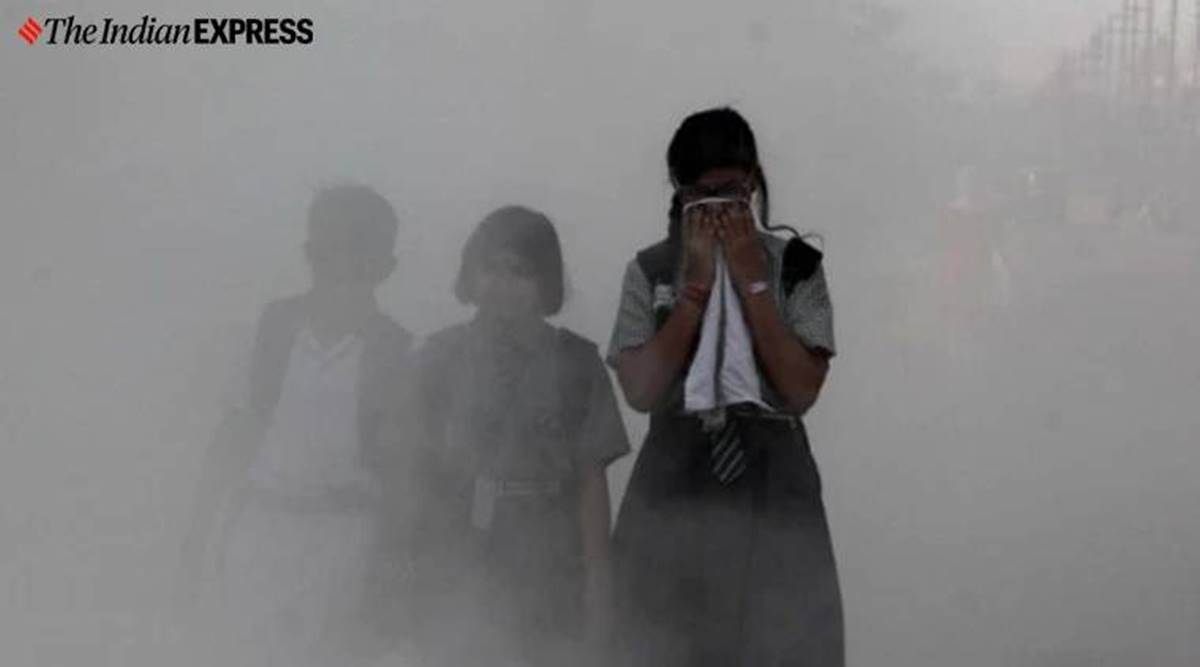A study conducted by IIT-Delhi has found that extended periods of exposure to PM 2.5 can lead to anaemia among children under the age of 5 years.
The study, titled ‘The Association Between Ambient PM 2.5 Exposure and Anaemia Outcomes Among Children Under Five Years of Age in India’, published in the journal Environmental Epidemiology, has found that for every 10 micrograms per meter cube increase in PM2.5 levels exposure, there is a decrease of 0.07 grams per dL in average haemoglobin levels.
This is the first study to have been carried out in India, where an association between exposure to PM 2.5 and anaemia in children under the age of 5 years in India has been examined and established, even as numerous other studies have looked at other detrimental health impacts of particulate matter.
“This is actually a huge increase if you see the difference between PM 2.5 levels in Himachal Pradesh as opposed to Delhi. The exposure of children under 5 years to PM 2.5 living in the capital will obviously be more. The study is important because so far anaemia has been looked at through the prism of nutrition deficiency, specifically that of iron. But even if government programmes like Poshan Abhiyan were strengthened, till air pollution is curtailed or exposure of children to PM 2.5 is brought down, anaemia is likely to continue to persist,” said Dr Sagnik Dey, lead author of the study.
India carries largest burden of anaemia
Anaemia, measured via low-blood haemoglobin concentration, is characterised by a decreased oxygen-carrying capacity of the blood. Globally, India carries the largest burden of anaemia, especially among women and children. There are numerous types of anaemia — the most common kinds are dietary iron deficiency, followed by chronic systemic inflammation. Exposure to air pollution, especially PM 2.5, has been shown to induce systemic inflammation.
According to the India National Family and Health Survey 2015–2016 (NFHS-4), 53.1 per cent of women in India with 15–49 years of age and 58.5 per cent of children under five were anaemic. The introduction of the National Iron Plus Initiative in 2011 sought to expand the beneficiaries of the National Nutritional Anaemia Prophylaxis Program to children with 6–59 months of age and although anaemia decreased by about 11 per cent between 2006 and 2016, it remains a major issue.
The IIT study included 98,557 children in the individual analysis across 636 districts, based on the findings of NFHS 4. About 63 per cent of the included children were found to be anaemic. Children with anaemia were on average slightly younger compared with children without anaemia, tended to be from lower wealth index levels, and had higher percentages of maternal anaemia.
Studies linking anaemia to PM2.5 have been few and those that have been carried out have been mostly in the US, Europe and China.
Dr Dey pointed out that most of these studies have concentrated on adult anaemia. Only one other study has been carried out linking PM 2.5 exposure to increased anaemia among children under 5 – in Lima, Peru.
According to Dr Dey, the Indian findings are similar to the Peru findings.
“We are waiting for the full results of the NFHS 5 to be released and that will be interesting to look at to see if there is a correlation between a decrease in pollution and anaemia as well and what effects national nutrition programmes and the National Clean Air programme has had on anaemia and the health of children,” said Dr Dey, adding that IIT-Delhi will also be studying adult anaemia as a next step.
This article is auto-generated by Algorithm Source: indianexpress.com


